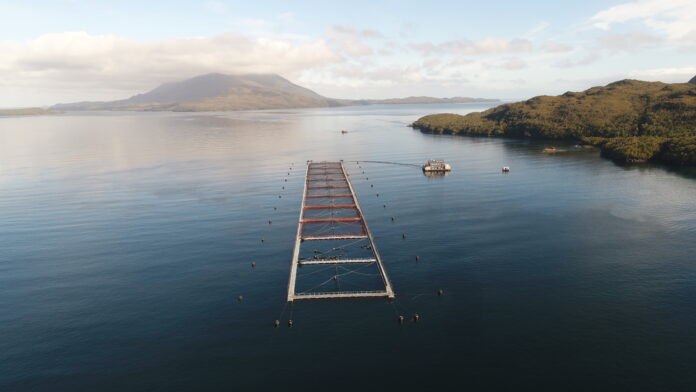More than 2,854 metric tons of salmon killed so far.
A significant algal bloom in Chile’s southern Aysen region has led to the death of 2,854 metric tons of Atlantic and coho salmon at farming sites operated by leading Chilean aquaculture companies AquaChile and Blumar, as reported by the country’s fisheries and aquaculture service, Sernapesca.
Blumar, in a recent communication to the Chilean stock exchange, disclosed that it is actively responding to an algal bloom outbreak at its Victoria production site. This site currently houses around 850,000 salmon, each averaging over 4 kilograms in weight, with an estimated total value of $18.5 million.
In response to this crisis, specialized diving teams, along with various vessels and equipment, have been deployed to the affected site. These efforts are part of a broader initiative to mitigate the impact of the algal bloom and prevent further losses.
The microalgae Pseudochatonella spp., identified as the cause, has also prompted similar actions at the Melchor 7 Center of AquaChile. Both companies have reported the activation of their respective plans for combating the harmful algal bloom and resultant mass mortality.
Juan Carlos Orellana, the Regional Director of Sernapesca, said that logistical efforts are underway to mitigate the impact, with High Seas Fishing Vessels – Erika, Bronco, and Quilpolemu – deployed for salmon mortality extraction.
“As Sernapesca we have been supervising compliance with the contingency plans of the affected companies and the withdrawal of mortality that the companies themselves must do,” said Orellana. “Mortality is being taken for final disposal to reduction plants. We will maintain surveillance of these and the surrounding ACS, since the centers in these areas continue to report the presence of the microalgae daily.”
Harmful Algal Blooms, like the current event, are natural phenomena driven by various climatic and environmental factors. They can cause an increase in specific microalgae species in the water, leading to blockage in fish gills and subsequent suffocation.
Importantly, this particular microalgae is distinct from the “red tide” algae and poses no threat to bivalve mollusks or other fish species.









